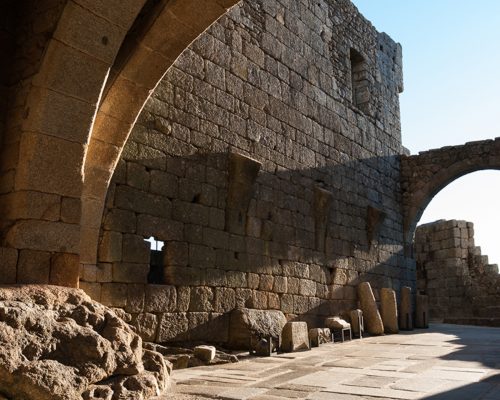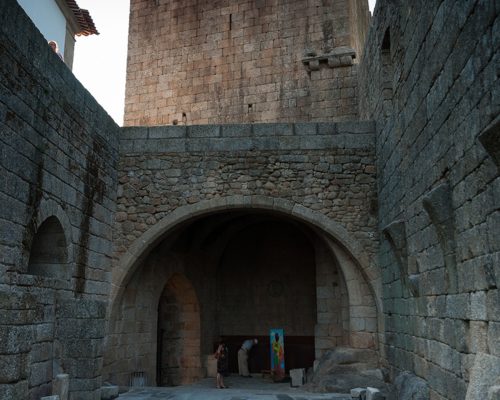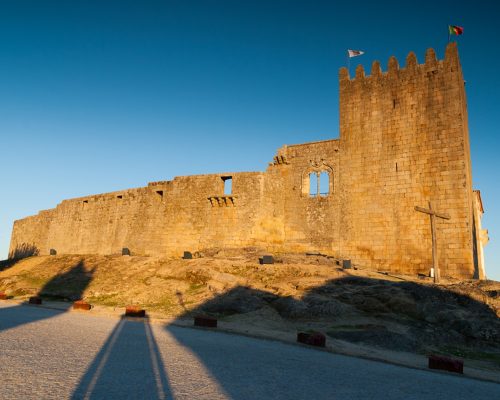Castle
Belmonte
Belmonte
King Afonso III authorised (Guimarães, 3/4/1266) Bishop Egas Fafes to build a tower can castle in Belmonte, which already had a defence system. On 20/9/1446 King Afonso V gave the castle to Fernão Cabral to build his home. In the west wall we can still see the panoramic windows and a Manueline window, conforming the adaptation of the castle to a residence rather than just a castle. In the late 17th century, a violent fire destroyed the west wing of the palace, after which it was abandoned and the family moved to what we suppose was Casa dos Condes, the current Discoveries Museum. There are signs that in the 17th century, Belmonte Castle was once again used for military purposes. Bulwarks were built, as mentioned by Father Luís Cardoso in 1751. These bulwarks were not doubt build because of the Restoration War, as was the case of Casa da Torre in Caria, where the 17th century bulwarks have survived. The castle covers an area of around 2,265 m2 and is an irregular oval shape with two gates. Its donjon is attached to the outside at the south-west corner and there is another building attached near the main gate to the south, from the 18th or 19th century. As mentioned above, we can see traces on the west wall of the Cabral family’s conversion of the castle into a manor. There is a well inside. The building was declared a National Monument by Decree on 15 October 1927. It was taken over by IPPAR in 1992 and an amphitheatre was built inside for performances. Archaeological prospecting was done inside the castle from 1992 to 1994, when proof of Roman occupation and the donjon was investigated in 1994 and 1995. The castle is open to the public and the donjon is a now a museum with archaeological pieces from the excavations.






